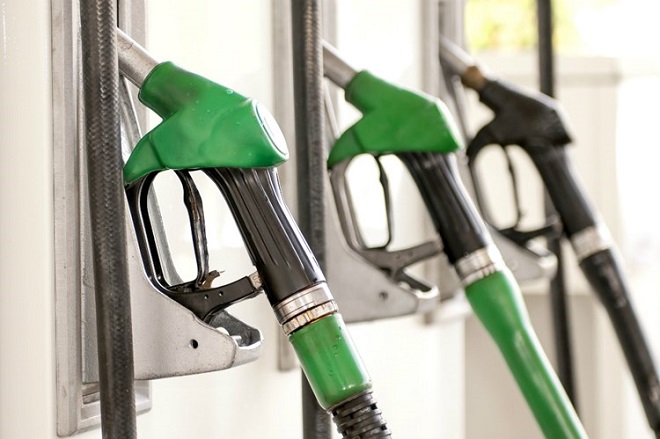
Kampala, Uganda | ISAAC KHISA | Peter Onasis Ochieng’ is the managing director of Hashi Energy. He spoke to The Independent’s Isaac Khisa about the current surge in fuel prices and the industry’s future outlook.

What explains the current trend of increase in fuel prices in Uganda and the region?
Fuel prices are made up of very many components. The biggest contributors to pricing include; the price of crude and refined product in the international market, insurance and freight costs, taxes levied by various governments, transport from the various ports to the various destinations in the region and the impact of exchange rate as majority of the inputs in the oil industry are billed in US Dollars hence very vulnerable to depreciation of the local currencies
Whereas costs input have remained almost constant, there are three components on the pricing that have changed in the last three years. The price of refined product (fuel) in the international market, which tend to fluctuate depending on demand and supply factor and the geopolitical issues amongst other issues. The prices have been rising since the last quarter of 2017.
The international prices for both crude and finished products have been on the rise. It is worth noting that the region no longer import crude oil as we do not have a functional refinery in Kenya, Uganda, Tanzania, Rwanda, Burundi and the Democratic Republic of Congo. The refinery in Mombasa, Kenya, was closed a few years ago. All fuel requirements for the region rely 100% on importation of refined product from the international market.
It is worth noting that the prices of crude and refined products follow a similar trend in that when the price of crude go up, the price of finished products also goes to up. The price of refined product (fuel), for instance, of premium petrol has increased from an average of US$486.5 per metric tonne in June 2017 to US$644 per metric tonne on average as at the end of January 2018 on the international market, representing a 32.4% rise.
Similarly, the price of Diesel has increased from US$424.81 per metric tonnes to US$ 596 per metric tonnes during the same period under review.
Given that we buy this commodities from the international market and the prices have generally gone up, it is the reason prices have gone up across in the region. The second reason why fuel prices have gone up is the exchange rate.
Nearly 70-80% of our expenditure/inputs to bring fuel into the country is in dollars. We pay for the products themselves in dollars including insurance and transportation. So, whenever there is depreciation of the Ugandan Shilling, there’s always an increase in fuel prices instantly because we buy fuel on a daily basis using dollars. For instance, if I bought a dollar at Shs 3,623 today and the next day I buy at Shs3, 630, I have to recover that cost.
But a section of fuel dealers have always said that at all times fuel is imported into the country at least three months earlier and this means that prices shouldn’t spike immediately upon a slight rise in prices in the international market?
Three months is too far. The fuel being sold in Kampala at the moment is for the December 2017-January 2018 imports. However, this also depends on the company. But in general, it makes sense as a businessman that when I sell one litre of fuel, I should be able to replace it the next day and if the dollar goes up, it is recommended to look at the replacement cost.
Looking at the Ugandan environment where it is very competitive, it doesn’t make sense for our company to outprice ourselves and I can say that most of the fuel companies in Uganda are losing money. I have been in this industry for a while and I know most of them are losing money yet people think that they are making huge profits. The reason they are not making money is that prices of fuel in Uganda are priced low compared to some countries in the region.
How can you claim that these fuel companies are not making money yet they are in operation every other year?
Ten years ago, we used to have several multinational in the region. Do you see them anymore? Where are they now? They are all gone. Could they have folded if they were making money? No. It is just that the return on investment doesn’t make sense. The oils companies control less than 2% of the pricing at gross level.
If there’s need to address fuel pricing issues, then, the focus should shift on how to lower the balance of the 98% on the pricing, which oil companies do not have control over.
For instance, in Uganda, the pump price at the moment is averagely Shs3, 800 per litre for petrol yet Ushs1, 100 is excise duty. For your information Excise duty has to be paid in advance. And I have seen that the government is proposing more excise duty on fuel, a move that will simply lead to a further rise in prices.
What is the outlook of fuel prices in the upcoming months?
Given that fuel prices in February were still going up, I expect a further surge in prices in the next two months to April. The exchange rate to the dollar is still high and therefore expect that the fuel prices in the coming months will be higher. This is because the products that motorists will be consuming in the next two months have already been imported into the country based on the average global fuel prices for January 2018. This implies that the fuel being imported into the country now is going to be more expensive unless something other factors set in. Beyond April, we shall have to look at the trend based on the global fuel prices and the exchange rate.
What is your assessment of fuel demand in the region?
The demand for fuel is going up. For instance, in Kenya, the demand for fuel grew by 7% between 2016 and 2017. I am yet to look into the numbers for Uganda but generally the consumption is increasing because the economy is expanding and people are buying more cars. Boda bodas are some of the biggest consumers of petrol and are the ones who have pushed the demand for petrol high.
What strategies are you undertaking as Hashi Energy to grow your business?
Effective last year, we have changed our strategy completely. We the exception of Rwanda, we have pulled out of retail business in Uganda and Kenya because we realised that it was not our strength. We are now focused on other segments: we are focussing on Consumer Sales, Export business and our LPG business which is doing very well in the region.
How is the fuel market outlook like in the region?
Generally, there has been growth in the economies but the oil industry in the region is changing very fast. This perception that there’s money in the industry is not true. There are a lot of enforcement issues that have made it difficult for the industry to maintain profitability. Soon, I see international fuel firms exiting the region either through buyout by local or regional firms.
What can be done to facilitate growth of this industry?
One of the main issues that need to be addressed is supply. At the moment, for instance, I am not able to import huge volumes of fuel, say 10milion litres per month if wanted. This is because all products are procured under the open tender system (OTS) that is managed by ministries of energy in Kenya and Uganda.
For instance, for Like Hashi, the allocation we get is not sufficient to handle our demand and this is not enough and we are aware of the deficit in the infrastructure in the region.
The other solution is that we just have to find a way of managing the foreign exchange. I also don’t see the reason for increasing excise duties on fuel every other year. We also need to work on general business environment so that businesses can boom and this will automatically lead to growth of the industry. Let me not forget to emphasise the need for the government to continuously level the playing ground in the industry and allow innovation and marketing strength of the companies to be the differentiation component between success and failure. If we reach this level then we will see a lot of growth in the industry and the same will reflected in fair pricing.
 The Independent Uganda: You get the Truth we Pay the Price
The Independent Uganda: You get the Truth we Pay the Price


